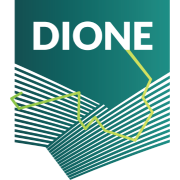Maria is an inspector at Paying Agency. She visits a couple of times per year at least 5% of farms which receive CAP direct payments for On The Spot Check (OTSC) of compliance. There are a number of eligibility rules to be checked: Single Area Payment Scheme (SAPS) compliance, Greening, Cross Compliance, Rural Development Obligations (mechanical weeding, etc).
Since 2018 the regulations allow modern technologies to perform checks on compliance so Maria also performs On The Sport Checks with Remote Sensing by visualizing EO imagery provided by JRC (VHR-HR-Sentinel) for compliance check. She also checks geo-tagged photos with the related information submitted by farmers using a mobile application.
However, she is facing a number of difficulties. For example, it is very challenging to perform the planned OTSC in a short time window (e.g. the Greening and grass mowing checks are performed during July 1 - August 30, which is only 40 working days). She is aware that due to the lack of resources and high execution costs, the control farms are only a small subset of the whole population. Even by using EO data, the photo interpretation is done mainly by humans so the process is still time consuming and variations in interpretation as well as wrong photo interpretations might exist.
Since 2018 the regulations allow modern technologies to perform checks on compliance so Maria also performs On The Sport Checks with Remote Sensing by visualizing EO imagery provided by JRC (VHR-HR-Sentinel) for compliance check. She also checks geo-tagged photos with the related information submitted by farmers using a mobile application.
However, she is facing a number of difficulties. For example, it is very challenging to perform the planned OTSC in a short time window (e.g. the Greening and grass mowing checks are performed during July 1 - August 30, which is only 40 working days). She is aware that due to the lack of resources and high execution costs, the control farms are only a small subset of the whole population. Even by using EO data, the photo interpretation is done mainly by humans so the process is still time consuming and variations in interpretation as well as wrong photo interpretations might exist.
1Scenario #1
Maria receives the automatically imported the following DIONE products for the area she is in charge of into the software that she uses for control of CAP direct payments:
● Crop type map- She needs the dataset to be updated several times throughout the vegetation season. She uses the data to verify the crop type claimed on agricultural parcel level as well as the area of the corresponding crop type which is a part of eligibility checking.
● Mowing/harvest/ploughing marker map - The data is generated through the vegetation season. When the map is imported, Maria can check at parcel level the compliance when agricultural activity is a criterion, for example ploughing is mandatory in case of land lying fallow or when mowing should happen before a certain date.
● Biophysical crop parameters (NDVI, FAPAR, Leaf Chlorophyll Content and others) - Maria receives the data regularly analyses the data to monitor the crop growth and determine the activities and crop growth stages.
● Non-productive EFA types map and permanent pastures map- Maria needs the maps to be produced annually for most of the EFA types except for fallow land in which case monthly data is required. She uses the data to check farmers’ compliance with cross-compliance GAECs and greening rules.
● Land Cover/Land Use maps from drones - Maria uses these very high resolution images to check and measure land parcel boundaries and as additional data for cross-compliance and greening check. This significantly reduces the need for On The Spot Checks.
2Scenario #2
Maria receives geo-tagged photos recorded by farmers imported to the software that she uses for control of CAP direct payments. The photos are accompanied with time and location stamp and additional information provided by farmers (e.g. parcel number, crop type, measures claimed, slope and elevation, etc.). She checks the photos and the accompanied information which replace the physical On The Spot Checks.
3Scenario #3
When conducting OTSCs, Maria collects data on soil characteristics using a miniaturized spectrometer which is remotely connected to DIONE mobile application installed on her smartphone. While the spectrometer scans spectral signature of the soil, the application collects the location and time stamp. Maria also takes a photo and types in some additional information within the application. The data is automatically sent to DIONE platform which translates the soil spectra into useful parameters (e.g. soil organic carbon) and send the results to the central database of the PA system.
4Scenario #4
Maria logs in to DIONE farmer’s compliance monitoring tool. A dashboard is opened with the list of farmers that applied for direct payments. For each, there is information about the current greening compliance status automatically generated by the DIONE. She searches in the dashboard to find a farmer she wants to check further by using filtering options. She clicks on the farmer’s name and the farmer's page opens with his parcels visualised on the map. A table is also provided with the statistical data (e.g. total area, list of parcels with current crop types, area under permanent pastures, area under EFAs, etc.).
Current farmer's compliance situation is displayed. She clicks on a particular field in the map and gets the information about the current crop type. From a spatial data list, Maria chooses DIONE products (e.g. crop types, EFAs, pastures, very high resolution orthoimagery, etc.) to be superimposed in the map section for further study. She also choses geo-tagged photos locations to be displayed on the map. She clicks on a location and gets the geo-tagged photo with attributes displayed so she can get in depth information.
Maria needs additional information on a certain location where the situation is not clear from the available data so she sends a request to the farmer to take geo-tagged photos there. Having an overview of the spatial distribution of incomliances, Maria can estimate which type of farmers is likely to be incompliant. This analysis helps her to figure out what will be the best way to make farmers to comply the next year or to find out why this type of farmers is likely not to comply.

